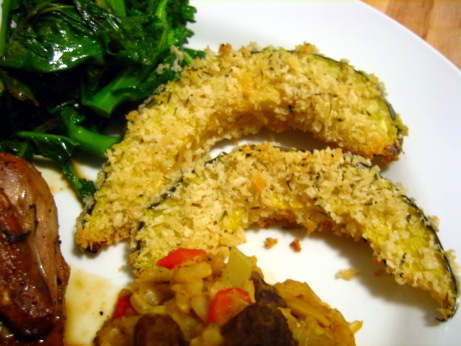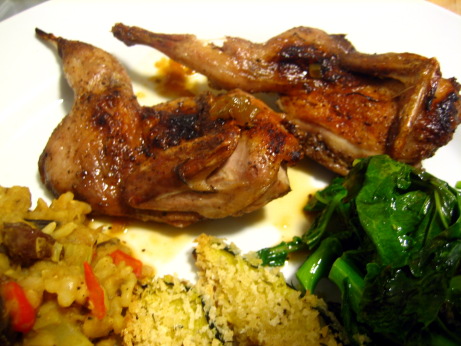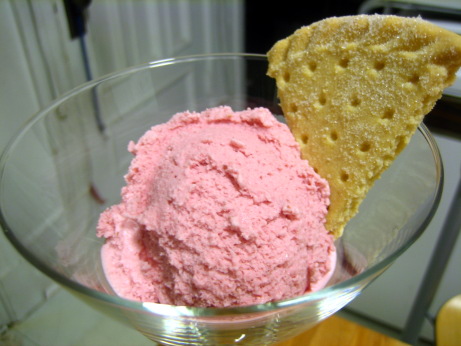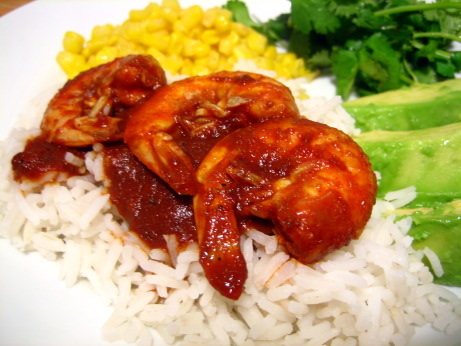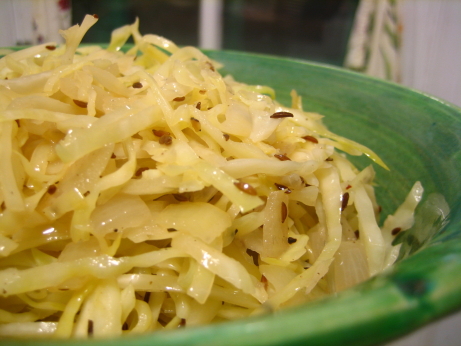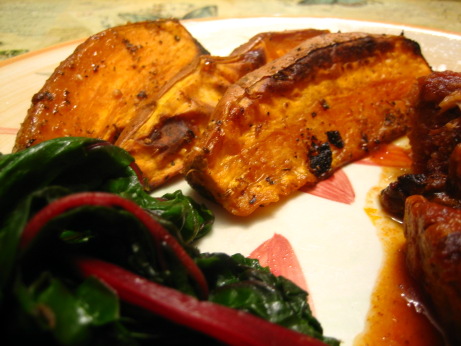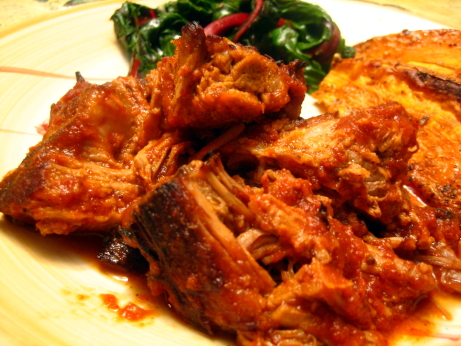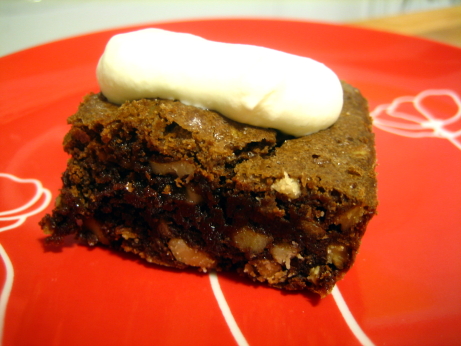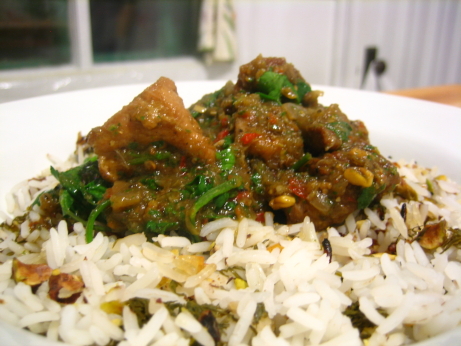Here’s a very simple and quite cool looking preparation for acorn squash. All you do is mix bread crumbs, thyme, salt, and pepper in a bowl. Melt butter in another bowl, and dip slices of acorn squash first into the butter, then coat with the bread crumb mixture. You then bake the squash slices for about 20 minutes.
The Good: I wouldn’t have guessed that acorn squash and thyme had such an affinity for one another, that was a very pleasant surprise indeed. Baked bread crumb toppings are generally good things, and this was no exception.
The Bad: I didn’t have any regular bread crumbs, and decided panko would be an acceptable substitute. I didn’t consider that because panko is so much lighter and has much more surface area than regular dry bread crumbs, it cooked much faster. When the recipes recommended 20 minutes in the over were up my bread crumbs were starting to burn so I had no choice but to pull the squash out. Unfortunately the interiors of the squash were still quite firm. I had to nuke the squash to get it to soften up. The bread crumb topping survived the trip through the microwave better than I would have expected though.
The Verdict: While the panko substitution was my fault, the cooking time for this recipe was too short, and that’s The Book’s fault. The flavours were excellent, and it was a very simple way to make an impressive looking side dish. I’ll certainly be making this again, but I’ll stick a little closer to the instructions next time.
